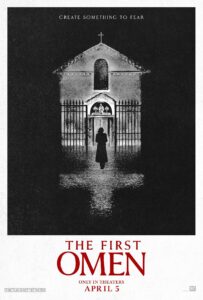
The First Omen
Rome, 1971. The young American novice Margaret arrives in the eternal city with the prospect of taking her vows as soon as possible. She is welcomed kindly by Cardinal Lawrence who has followed her since she was a child, at her orphanage. And the cardinal takes her to an orphanage in Rome so that Margaret can work there with the nuns who run it, waiting to become a nun too. Meanwhile, Margaret shares an apartment in the city with the equally young Spaniard Luz, who will take her vows before her. Luz, more relaxed, also introduces her to the Capitoline nightlife, but in this atmosphere of joy comes the unexpected visit of Father Brennan, an excommunicated priest who warns Margaret of a serious danger that has to do with a strange orphan, Carlita, which, vilified by everyone, Margaret has instead grown to love. Margaret pushes away Father Brennan in annoyance, but things take a sinister turn that will convince her to change her mind.
The saga that began with the celebrated The Omen (1976), quite significant in the horror field, has so far been relatively limited in quantity: after the initial trilogy, in fact, there have only been a late fourth television episode in addition to a more recent (and short ) series, also television. Plus of course an inevitable remake. But the appeal of the theme has evidently remained and this new attempt proves it.
Furthermore, as often happens when you don’t know how to continue, you go back: instead of a sequel we chose, in this case as in others, to make a prequel that wants to tell what happened before the original film. In doing so, the film aims to specify more precisely the reasons that led to the sequence of events told in The Omen, immersing the story in the sociopolitical climate of Italy (and not only Italy) of that period, with the revolts anti-authoritarian students and with, therefore, the marked danger of secularism which, according to the film, would have greatly worried the deviant fault lines of ecclesiastical power.
The description of this sociopolitical climate is necessarily rather schematic and casual, serving above all to demonstrate a conspiracy thesis which, from a narrative point of view, still manages to emerge with reasonable effectiveness. But the best part of the film is the description of Margaret’s character, which is the one with which the viewer is led to identify, given that she represents the most human and sensitive point of view: thanks also to the intense acting performance of Nell Tiger Free , Margaret emerges with good credibility and it is on her that the narrative anchors itself effectively.








